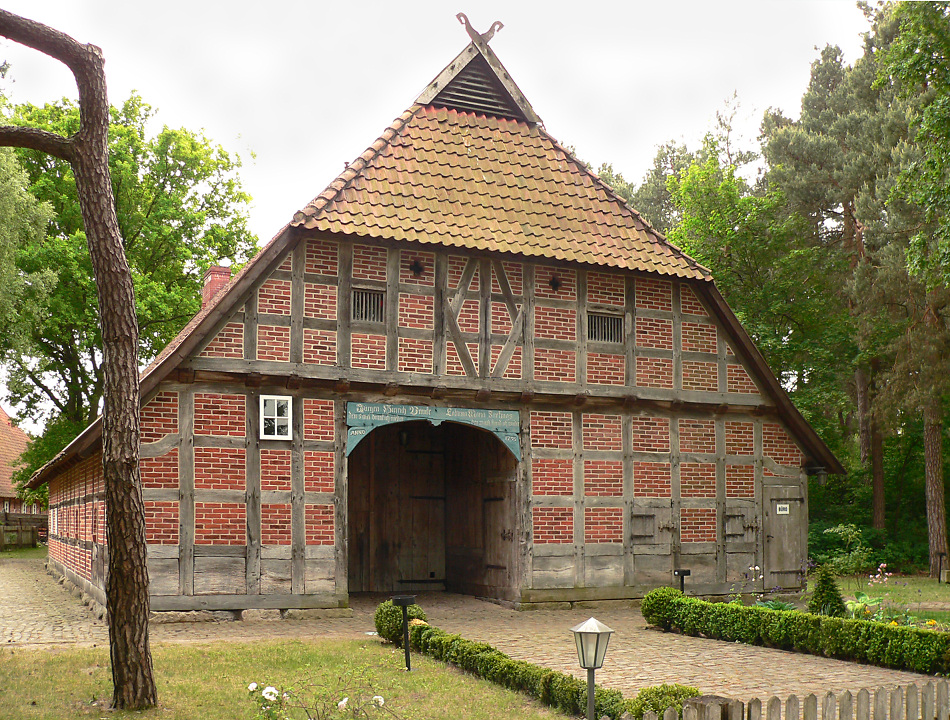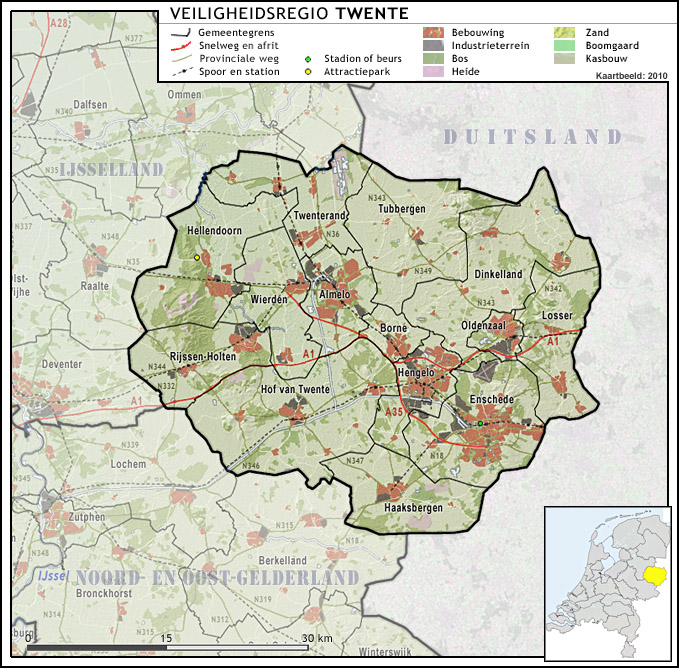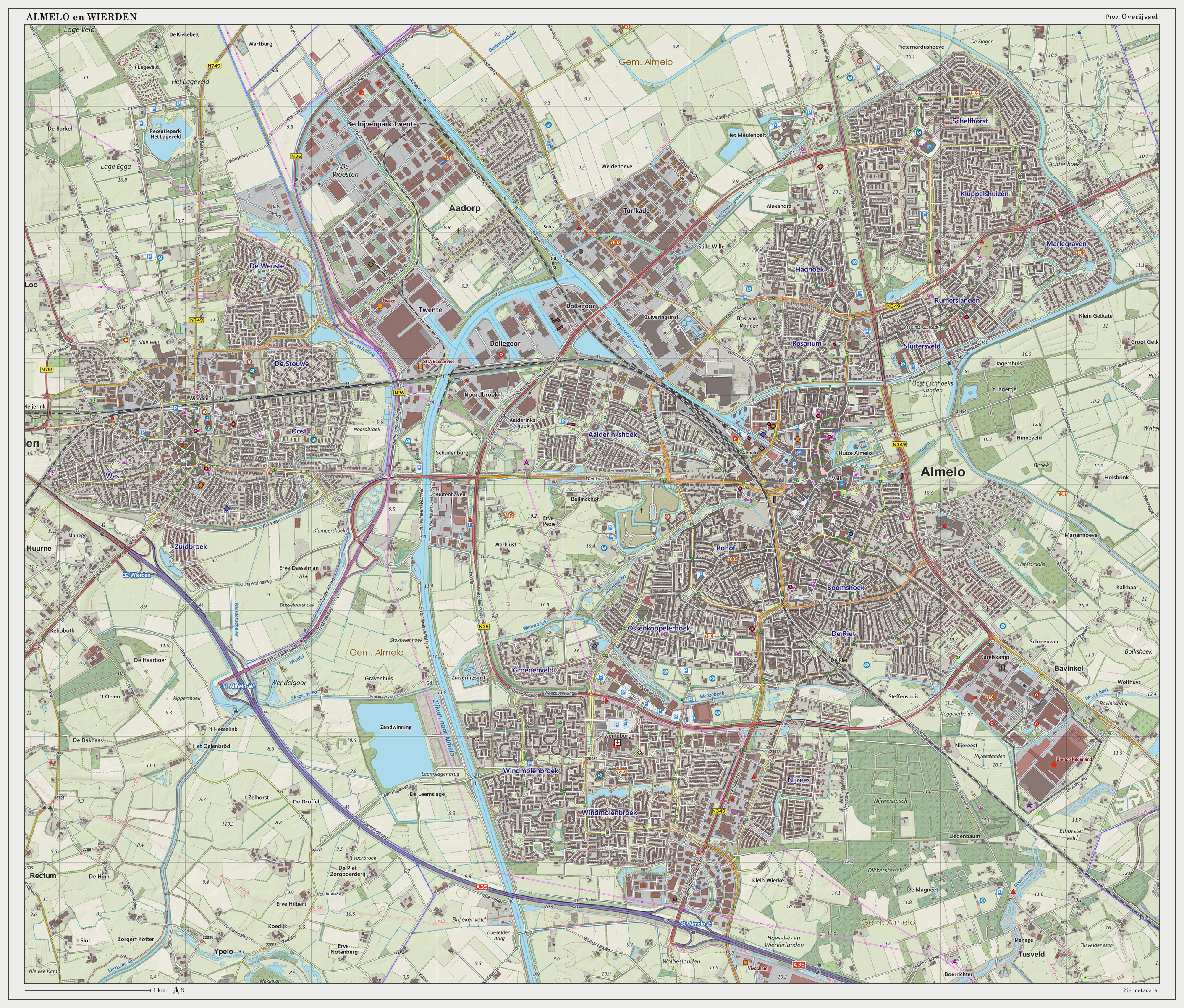|
Vasse, Netherlands
Vasse (Tweants: ) is a village in the Dutch province of Overijssel. It is a part of the municipality of Tubbergen, and lies about 15 km northeast of Almelo. History Vasse developed as an ''esdorp'' along the Vasser Es River. It was first mentioned in the late 10th century as "in Fahsi". The etymology is unclear. In 1803, it became an independent parish. In 1840, it was home to 298 people. In 1861, the Catholic church was built in Vasse, and a village developed around it. Some rural farms and barns are good examples of the traditional building style in Twente which includes variations of the Low German house. The village is a popular destiny as a starting point for hiking or biking trips because of the beauty and variety of the nature surrounding it. Local hotels and restaurants are primarily oriented towards this type of tourists. The tar pits of Vasse were a former sand excavation in which chemical waste Chemical waste is any excess, unusable, or unwanted chemical, e ... [...More Info...] [...Related Items...] OR: [Wikipedia] [Google] [Baidu] |
Village
A village is a clustered human settlement or community, larger than a hamlet but smaller than a town (although the word is often used to describe both hamlets and smaller towns), with a population typically ranging from a few hundred to a few thousand. Though villages are often located in rural areas, the term urban village is also applied to certain urban neighborhoods. Villages are normally permanent, with fixed dwellings; however, transient villages can occur. Further, the dwellings of a village are fairly close to one another, not scattered broadly over the landscape, as a dispersed settlement. In the past, villages were a usual form of community for societies that practice subsistence agriculture, and also for some non-agricultural societies. In Great Britain, a hamlet earned the right to be called a village when it built a church. [...More Info...] [...Related Items...] OR: [Wikipedia] [Google] [Baidu] |
Tweants Dialect
Tweants (Tweants pronunciation: ; nl, Twents ) is a group of non-standardised, closely related Westphalian, Dutch Low Saxon dialects, descending from Old Saxon. It is spoken daily by approximately 62% of the population of Twente, a region in the eastern Dutch province of Overijssel bordering on Germany. Tweants is part of the larger Low Saxon dialect continuum, spreading from the Veluwe region in the middle of the Netherlands to the German-Polish border. As a consequence, it shares many characteristics with surrounding dialects, such as Sallaans dialect, Sallaans and Achterhooks in the Netherlands, and Westmünsterländisch in Germany. All towns and villages in Twente have their own local, but mutually intelligible variety. Due to this fragmentation and lack of a standard variety, many speakers of Tweants call it by the locality their variety is from (e.g. a person from Almelo would say they speak "Almeloos" rather than "Tweants"). Alternatively, speakers combine the names: ... [...More Info...] [...Related Items...] OR: [Wikipedia] [Google] [Baidu] |
Thijs Houwing
Thijs Houwing (born 22 April 1981) is a Dutch former professional footballer who played as a striker. Playing career Club career Born in Vasse, Houwing began his career with Twente, scoring on his professional debut on 26 March 2000. He also played professionally for De Graafschap and Cambuur. Houwing later played for Kozakken Boys, SV Spakenburg, HHC Hardenberg and DOS'37. International career Houwing represented the Netherlands at the 2001 FIFA World Youth Championship, making 4 appearances in the tournament. Later career While playing part-time for SV Spakenburg, Houwing also worked in the marketing department at Heracles Almelo Heracles Almelo is a Dutch professional football club based in Almelo, founded in 1903. The club has won the Dutch national title twice, in 1927 and 1941. Heracles won the Eerste Divisie title during the 2004–05 season, gaining promotion to th .... He had previously studied Commercial Sport Economics at the Johan Cruyff University. Reference ... [...More Info...] [...Related Items...] OR: [Wikipedia] [Google] [Baidu] |
Chemical Waste
Chemical waste is any excess, unusable, or unwanted chemical, especially those that cause damage to human health or the environment. Chemical waste may be classified as hazardous waste, non-hazardous waste, universal waste, and household hazardous waste. Hazardous waste is a material that displays one or more of four characteristics: ignitability, corrosivity, reactivity, and toxicity. This information, along with disposal requirements, is typically available on the Material Safety Data Sheet (MSDS). Chemical waste that is radioactive, radioactive waste, requires special means of handling and disposal. Biohazardous waste, although often chemical, falls into four categories and is handled differently. Laboratory chemical waste in the US The U.S. Environmental Protection Agency (EPA) prohibits disposing of certain materials down drains. Therefore, when hazardous chemical waste is generated in a laboratory setting, it is usually stored on-site in an appropriate waste carbo ... [...More Info...] [...Related Items...] OR: [Wikipedia] [Google] [Baidu] |
Low German House
The Low German house or ''Fachhallenhaus'' is a type of timber-framed farmhouse found in northern Germany and the easternmost Netherlands, which combines living quarters, byre and barn under one roof. It is built as a large hall with bays on the sides for livestock and storage and with the living accommodation at one end. The Low German house appeared during the 13th to 15th centuries and was referred to as the Low Saxon house (''Niedersachsenhaus'') in early research works. Until its decline in the 19th century, this rural, agricultural farmhouse style was widely distributed through the North German Plain, all the way from the Lower Rhine to Mecklenburg. Even today, the ''Fachhallenhaus'' still characterises the appearance of many north German villages. Name The German name, ''Fachhallenhaus'', is a regional variation of the term ''Hallenhaus'' ("hall house", sometimes qualified as the "Low Saxon hall house"). In the academic definition of this type of house the word ''Fac ... [...More Info...] [...Related Items...] OR: [Wikipedia] [Google] [Baidu] |
Twente
Twente ( nl, Twente , Tweants dialect: ''Tweante'') is a region in the eastern Netherlands. It encompasses the most urbanised and easternmost part of the province of Overijssel. Twente is most likely named after the Tuihanti or Tvihanti, a Germanic tribe that settled in the area and was mentioned by the Roman historian Tacitus. The region's borders are defined by the Overijssel region of Salland in the northwest and west (the river Regge roughly defines the western border), the German County of Bentheim in the northeast and east (the river Dinkel roughly defines the eastern border) and the Gelderland region of the Achterhoek in the south. Twente has approximately 620,000 inhabitants, most of whom live in its three largest cities: Almelo, Hengelo and Enschede, the latter being the main city of the region. It comprises fourteen municipalities: Almelo, Borne, Dinkelland, Enschede, Haaksbergen, Hellendoorn, Hengelo, Hof van Twente, Losser, Oldenzaal, Rijssen-Holten, Tubbergen, Twe ... [...More Info...] [...Related Items...] OR: [Wikipedia] [Google] [Baidu] |
Angerdorf
__NOTOC__ An ''Angerdorf'' (plural: ''Angerdörfer'') is a type of village that is characterised by the houses and farmsteads being laid out around a central grassed area, the ''anger'' (from the Old High German ''angar'' =pasture or grassy place), a village green which was common land, owned jointly by the village community. The ''anger'' is usually in the shape of a lens or an eye, but may also take other forms: a rectangle, triangle, circle or semi-circle (illustrated). The buildings are oriented with their eaves facing the road. Livestock stalls and barns are at the rear of the plot (in Austria called the '' Hintaus'') and may be linked by a farm track that runs around the village forming an outer ring. There is often a village pond on the ''anger'' and sometimes a stream flows through it which may not be easy to recognise today where the groundwater level has changed. The waterbody may well be the reason the ''anger'' was chosen. Originally there were no buildings on the ''an ... [...More Info...] [...Related Items...] OR: [Wikipedia] [Google] [Baidu] |
Almelo
Almelo () is a municipality and a city in the eastern Netherlands. The main population centres in the town are Aadorp, Almelo, Mariaparochie, and Bornerbroek. Almelo has about 72,000 inhabitants in the middle of the rolling countryside of Twente, with the industrial centres of Enschede and Hengelo as close neighbours but also with tourist towns like Ootmarsum, Delden and Markelo only a bicycle ride away. Almelo received city rights in 1394. Within the city limits lies the castle of the Counts of Almelo. Located in the city centre is Huize Almelo, a castle that in its current form dates back to 1662 (This castle is not open to the public). There are mosaics which decorate the walls of the tunnel close to the railway station. The city is also known for its local association football club Heracles Almelo, which plays in the Eredivisie, the highest football league in the Netherlands. The club uses the Erve Asito. History At the end of the 19th century textile emerged as a major emp ... [...More Info...] [...Related Items...] OR: [Wikipedia] [Google] [Baidu] |
Telephone Numbers In The Netherlands
Telephone numbers in the Netherlands are administered by the Ministry of Economic Affairs, Agriculture and Innovation of the Netherlands and may be grouped into three general categories: geographical numbers, non-geographical numbers, and numbers for public services. Geographical telephone numbers are sequences of 9 digits (0-9) and consist of an area code of two or three digits and a subscriber number of seven or six digits, respectively. When dialled within the country, the number must be prefixed with the trunk access code 0, identifying a destination telephone line in the Dutch telephone network. Non-geographical numbers have no fixed length, but also required the dialling of the trunk access code (0). They are used for mobile telephone networks and other designated service types, such as toll-free dialling, Internet access, voice over IP, restricted audiences, and information resources. In addition, special service numbers exist for emergency response, directory assistance ... [...More Info...] [...Related Items...] OR: [Wikipedia] [Google] [Baidu] |
Overijssel
Overijssel (, ; nds, Oaveriessel ; german: Oberyssel) is a Provinces of the Netherlands, province of the Netherlands located in the eastern part of the country. The province's name translates to "across the IJssel", from the perspective of the Bishopric of Utrecht, Episcopal principality of Utrecht by which it was held until 1528. The capital city of Overijssel is Zwolle (pop. 127,497) and the largest city is Enschede (pop. 158,986). The province had a population of 1,162,215 as of November 2019. The land mostly consists of grasslands and some forests (including Sallandse Heuvelrug National Park); it also borders a small part of the IJsselmeer to the west. Geography Overijssel is bordered by Germany (Lower Saxony and North Rhine-Westphalia) to the east, the Achterhoek region of Gelderland to the south, the Veluwe region of Gelderland and Flevoland to the west, and Friesland and the former moors of Drenthe to the north. Overijssel comprises three regions: Kop van Overijssel in ... [...More Info...] [...Related Items...] OR: [Wikipedia] [Google] [Baidu] |
List Of Postal Codes In The Netherlands
Postal codes in the Netherlands, known as ''postcodes'', are alphanumeric, consisting of four digits followed by two uppercase letters. The letters 'F', 'I', 'O', 'Q', 'U' and 'Y' were originally not used for technical reasons, but almost all existing combinations are now used as these letters were allowed for new locations starting 2005. The letter combinations ' SS', ' SD' and ' SA' are not used because of their associations with the Nazi occupation of the Netherlands. The first two digits indicate a city and a region, the second two digits and the two letters indicate a range of house numbers, usually on the same street. Consequently, a postal address is uniquely defined by the postal code and the house number. On average, a Dutch postal code comprises eight single addresses. There are over 575,000 postal codes in the Netherlands . Stadsregio Amsterdam Postbus 626 1000 AP Amsterdam Caribbean Netherlands The three BES-islands, which became part of the country in 2010, do ... [...More Info...] [...Related Items...] OR: [Wikipedia] [Google] [Baidu] |
Central European Summer Time
Central European Summer Time (CEST), sometimes referred to as Central European Daylight Time (CEDT), is the standard clock time observed during the period of summer daylight-saving in those European countries which observe Central European Time (CET; UTC+01:00) during the other part of the year. It corresponds to UTC+02:00, which makes it the same as Eastern European Time, Central Africa Time, South African Standard Time, Egypt Standard Time and Kaliningrad Time in Russia. Names Other names which have been applied to Central European Summer Time are Middle European Summer Time (MEST), Central European Daylight Saving Time (CEDT), and Bravo Time (after the second letter of the NATO phonetic alphabet). Period of observation Since 1996, European Summer Time has been observed between 01:00 UTC (02:00 CET and 03:00 CEST) on the last Sunday of March, and 01:00 UTC on the last Sunday of October; previously the rules were not uniform across the European Union. There were proposals ... [...More Info...] [...Related Items...] OR: [Wikipedia] [Google] [Baidu] |




.jpg)


